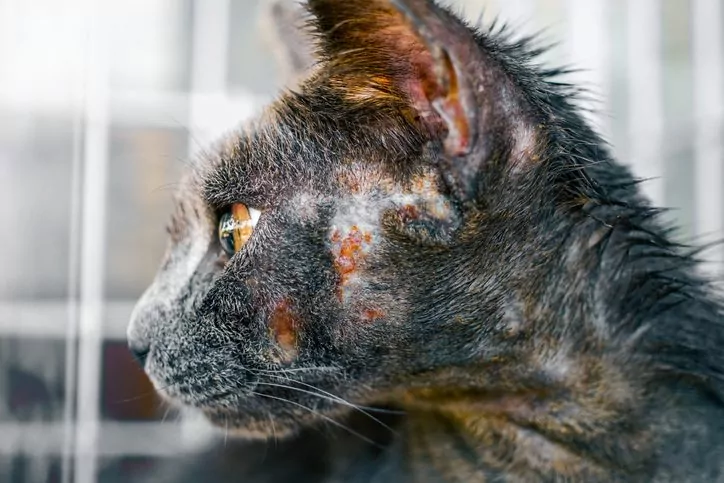Ringworm Reality: What Every Foster Should Know
When you bring home a foster pet, sometimes they come with unexpected medical needs. One condition that can sound scarier than it really is is Ringworm. Despite its name, ringworm is not a worm at all. It is a common fungal infection that affects the skin, hair, and nails of both animals and people. With proper care, most foster pets recover well, and your support plays a huge role in helping them heal.
What is Ringworm?
Ringworm is caused by a fungus that lives on the surface of the skin. It spreads through contact with an infected animal, contaminated surfaces, or shared items such as bedding, brushes, or toys. In shelter environments where many animals are housed together, ringworm is fairly common.
Signs and Symptoms
Ringworm can look different from pet to pet, but some of the most common signs include:
• Patches of hair loss
• Scaly, crusty, or reddened skin
• Circular lesions, sometimes itchy
• Brittle or broken hairs
Some pets may only have one or two small spots, while others may have more widespread areas.
Is Ringworm Contagious?
Yes, ringworm is contagious to both people and other animals. However, it is very treatable and preventable with good hygiene. Always wash your hands after handling your foster and limit their contact with your personal pets until treatment is complete. Wearing long sleeves and washing bedding, clothing, and surfaces regularly will help prevent the spread.
Treatment and Care
Our veterinary team will provide a treatment plan tailored to your foster’s needs. This usually includes a combination of oral medication and topical treatments such as medicated baths or ointments. Treatments are typically given over several weeks since ringworm takes time to fully clear.
Your role at home is to:
• Give all medications exactly as directed
• Bathe your foster with medicated shampoo if prescribed
• Keep your foster in a designated area to limit contamination
• Clean surfaces, bedding, and toys regularly
What to Expect at Home
Caring for a foster with ringworm can feel like extra work, but it is temporary. With consistent treatment, you will usually begin to see new hair growth in affected areas within a few weeks. Lesions will gradually shrink and skin will begin to look healthier.
Remember, ringworm does not mean your foster is unhealthy overall. Many pets with ringworm are otherwise happy, playful, and full of love. Your dedication during their recovery helps ensure they are ready to move on to their forever homes.
When to Reach Out
If you notice your foster developing new lesions, if the skin appears more inflamed or painful, or if they seem unusually tired or stop eating, please schedule a follow up with our medical team through the Foster Scheduling App (Acuity). Adding photos of the lesions can be very helpful for our team in monitoring progress.
The Good News
Ringworm is a treatable condition, and with your care, your foster will recover and be adoption ready. Many potential adopters are hesitant about ringworm, so the time you invest makes a tremendous difference in their future. By opening your home and following treatment, you are giving a pet the chance to heal, grow, and thrive.

